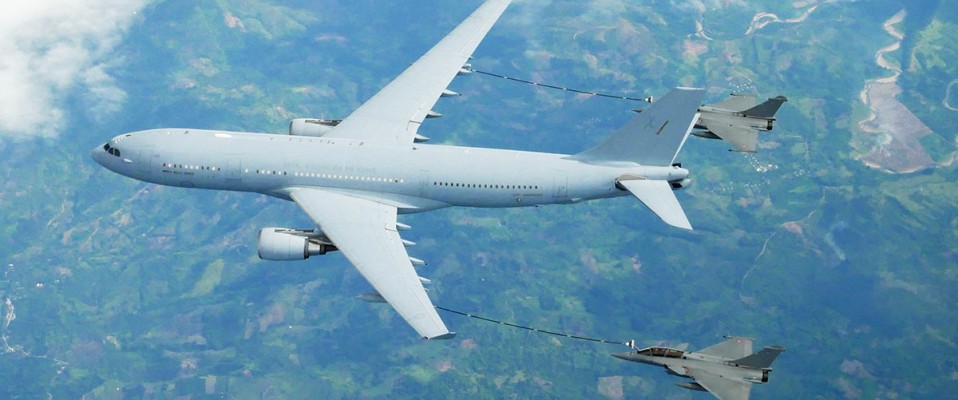Pitch Black 2018: THE DRAGON’S ENDURANCE
Royal Australian Airforce’s No.33 Squadron extends the reach in Pitch Black 2018
Report by Jaryd Stock
Photos by RAAF, Armée de l’Air and Jaryd Stock
August 9, 2018
This year’s Pitch Black has been the biggest air defence exercise held in Australia let alone held in the Southern Hemisphere to date.
With over 140 aircraft participating in Royal Australian Airforce’s (RAAF) ultimate exercise that’s bringing twelve nations together working in complex scenarios in the air achieving objectives set by mission planners, it is a big task to make sure that the strike and air superiority aircraft are flying at all times achieving their objectives.
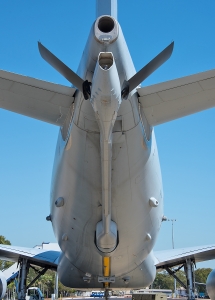 Contributing largely to the aerial refuelling (AAR) role is the RAAF’s Number 33 Squadron “Dragons” from RAAF Base Amberley. Due to the enormity of this year’s Pitch Black 33SQN was tasked to provide AAR basing from Amberley as their simply was no room that was afforded to the KC-30A Multirole Tanker Transport due the aircraft’s large size at either RAAF Base Darwin or RAAF Base Tindal.
Contributing largely to the aerial refuelling (AAR) role is the RAAF’s Number 33 Squadron “Dragons” from RAAF Base Amberley. Due to the enormity of this year’s Pitch Black 33SQN was tasked to provide AAR basing from Amberley as their simply was no room that was afforded to the KC-30A Multirole Tanker Transport due the aircraft’s large size at either RAAF Base Darwin or RAAF Base Tindal.
To highlight that point, it was noted that even the C-27J Spartans operated by RAAF No.35 Squadron had no apron space available to them at Darwin so the Spartans had to park on the grass adjacent to the RAAF air movements flight line. Also when a National Air 747-400 freighter came into Darwin bringing in spare parts for the USAF 80th Fighter Squadron some military aircraft had to be parked on the civilian side of Darwin Airport as there simply wasn’t enough room to accommodate all the aircraft.
At a rough count conducted by a few aviation media people during the first weeks embed it was estimated that around eighty-two military aircraft were operating from RAAF Base Darwin.
As a result each day of the Exercise 33SQN is sending one of its KC-30A flying from Amberley conducting AAR south west of Darwin over the Bradshaw Field training area and the surrounding airspace generally out towards the ocean or where the command and control piece (C2) usually the controllers onboard the E-7A Wedgetail have directed the KC-30 to go in the Pitch Black airspace.
Once that AAR during that sortie has been achieved with the receivers usually made up of the various fighter squadrons either basing at Tindal or Darwin the KC-30 crew head for Darwin to land and take on fuel for their return, once that work has been completed the KC-30 will depart roughly two hours later back to Amberley rounding out the days trip, and then the next day it is starting all over again.
APD was invited along for a ride with the aircrew from 33SQN onboard their KC-30, showcasing its abilities for the exercise working with United States Airforce as well as Republic of Singapore Airforce F-16’s and RAAF F/A-18 Classic Hornets.
Onboard we sat down with Flying Officer (FLGOFF) Luke Moran from 33SQN, we talked about his role during Pitch Black and what went into the mission planning for 33SQN and gain an insight into actually how big these missions really are for the crews of 33SQN.
“My specific role for Pitch Black is one of the tanker liaison officers and my role here is to work with the lot of international receivers and work on the flying program and prepare products and information that the crews need to fly in Pitch Black.”
With any exercise and any associated flying there is a huge logistical program that is in place to deal with the various flights and missions any squadron will conduct. This no different for the tanker liaison officers two of which are based in Darwin for the duration of Pitch Black 2018. To gain a better understanding of what exactly is the behind the scenes FLGOFF Moran details exactly what his role for the exercise is, and the meticulous planning that goes into each mission undertaken by 33SQN especially since they are operating out of Amberley for the first time for a Pitch Black exercise.
“Well one of the interesting things for this exercise is that we are operating out of Amberley which is our home base, so that involves a lot of flying and it involves a four hour transit time to the Pitch Black airspace up around Darwin from Amberley that’s not including our loiter time in the Pitch Black airspace.”
“Both myself and FLGOFF Ben Howlett are the tanker liaison officers for the exercise based here in Darwin and we’ll be here for the whole three weeks of the exercise.” -he says.
“During the first week or at the start of the exercise you’re getting used to the airspace we are operating in, how many receivers we are going to get and what they are operating with, and also the other tankers that are operating in the airspace alongside us, and then develop that flying program and coordinating the timing of those receivers and how much fuel they need”.
He continues onto say, “We put all of that together, and Ben and I as a team working on putting all that information together and we put a schedule or roster together where we have worked out those times and prepare the products and type out a card full of the information for the aircrews, and also submit flight notifications so air traffic control are aware of what we are going to do each day.”
“And with that we contact those receivers beforehand to make sure there are no changes, and so we put all that together and have that information ready for the aircrews so they can just turn up to work ready to go, get all the products we have out and if there are any changes we can brief it to them whilst they are in the air on their way to the Pitch Black airspace.”
It’s a busy time behind the scenes, the tanker liaison officers will try and limit the amount of work that aircrews are doing and let them concentrate on their work by flying and conducting either ‘hose and drogue’ or boom operations. The liaison officers want to help out the team they are making sure that all the information is available to those crews flying the KC-30 and those officers will inform them at a moment’s notice if anything changes, so those crews can again concentrate on their tasks flying as safe as possible.
Most types of fighter aircraft in the western world have conducted AAR with the RAAF KC-30’s especially those aircraft that are associated with Operation Inherent Resolve/ Operation OKRA, OKRA being the Australian Government’s commitment to the fight on terror in the Middle East by committing one KC-30 from 33SQN to be a part of the Air Task Force Group the RAAF had assigned to operate in OKRA, of which one KC-30 is still in the middle east region conducting AAR to support coalition ground strikes from aircraft operating in that region.
Exercise Pitch Black this year however created something new for the 33SQN team, with the Indian Airforce Su-30MKI’s conducting AAR with the KC-30, using the hose and drogue system from the aircraft’s wingtip pods for the very first time.
FLGOFF Moran explains what it was like for the Squadron conducting the mission where that first contact was made between KC-30 hose and basket by the Su-30, and the work that went on behind the scenes to make sure that everything went smoothly as possible.
“It is quite interesting actually, we have never refuelled Su-30 Flankers before and the Indian Airforce have never refuelled off a KC-30 before so there are two sort of interesting aspects there.”
“And what we did beforehand was Ben and I would liaise with the Indian pilots in particular especially when we got to Pitch Black and sat down with them and answered a few questions they had, and we went on discussing procedures and to make sure they are all similar and how we are going to operate conducting AAR with them.”
FLGOFF Moran continues to explain, “And there were some specific questions about tanking from a KC-30 they wanted to know, and also wanting to know about our hose and drogues and the demissions of them, and there were some questions about how to operate behind a big aircraft and the wake turbulence it produced, and dealing with that.”
He continues-,“We discussed a lot of those points and we came up with a procedure with the Indian Airforce we were all happy with.”
“When the time came for them to conduct AAR from the KC-30 we gave them an extra five to ten minutes forming up off the KC-30 just to get them comfortable behind the aircraft and so that allowed them to get their visual cues sorted out, and to get them to understand what they are looking for. Then from there they proceeded with dry plugs (hooked into the hose but not taking on fuel) and then from there they received wet plugs (hooked into hose and taking on fuel) and we took it from there”.
The Aerial Refuelling Officers got great time in working with the Indian Airforce FLGOFF Moran explains, “Well its very rare for us to see Sukhoi’s here in the southern hemisphere so it is interesting to work with them, they are quite a large aircraft as well, bigger than what we are used to, and working with a different airforce as well its building a great relationship and standing so it’s good, and to be honest it has been enjoyable working with them.”
“And at the end of Pitch Black we are going to be dragging them on their way home to at least to Butterworth in Malaysia as well, so we will get more experience there as well working with them, and get to see how they plan as well and then gain more valuable interoperability working together as well.”
Not only is it worthy to note that the Indian Airforce have been utilising the capabilities of the KC-30 during Pitch Black. But also of note is 33SQN also brought out three Armee de l’air (French Airforce) Rafale B’s from Escadron de Chasse (Fighter Squadron) 1/4 “Gascogne” based at Saint- Dizier Air Base in France, and also have been conducting AAR mission with Republic of Singapore Airforce F-16C/D’s from 149 and 143 Squadrons.
Both nations are in the process of accepting their first KC-30 MRTT’s for their perspective airforces and coming to Pitch Black and working with 33SQN will give those airforces some great experience in working alongside a KC-30.
FLGOFF Moran explains what its like for those countries, “Well we dragged the Rafales into the country and will be doing some work with them and another point of note with the French and the Singaporeans, their airforces are acquiring the KC-30, so its good experience then to get familiarisation for their pilots and for those pilots to get experience working with the KC-30before it gets introduced in their own service.”
The team from 33SQN has the biggest aerial refuelling tanker at Pitch Black 2018, and is conducting most of the work due to the amount of fuel it can carry, the aircraft and crews are putting in huge days conducting around thirteen hour round trip from Amberley back to Amberley, one thing that has helped is the fact that 33SQN made sure that the crews were well rested whilst conducting those big missions.
The crew operating the aircraft flying up from Amberley would land at Darwin then would let another crew board the KC-30 in Darwin and fly it back to Amberley that night with the original crew flying the next KC-30 back to Amberley the next day, always ensuring that crews were well rested.
The KC-30 has proven to be a great asset to the RAAF, even though there were teething problems to begin with when the type was initially introduced into service with 33SQN, this though has made the aircraft and the Squadron that operate it grow and mature the aircraft and the operations undertaken growing it to its full potential. Over in the Middle East 33SQN and the KC-30 it is the tanker of choice for all coalition forces, it’s an aircraft that excels in its mission.
The aircraft can take on over 100 tonnes of gas to offload on a mission of this caliber that is undertaken during Pitch Black. The squadron has been providing fuel to United States Airforce and Singaporean F-16’s United States Marine Corps F/A-18D’s from VMFA-242 as well as providing fuel to the RAAF’s own Classic Hornets from No.77 squadron in addition to F/A-18F’s from No.1 squadron and EA-18G’s from No.6 squadron.
LEAD IMAGE: © Commonwealth of Australia, Department of Defence, courtesy of Armée de l’Air
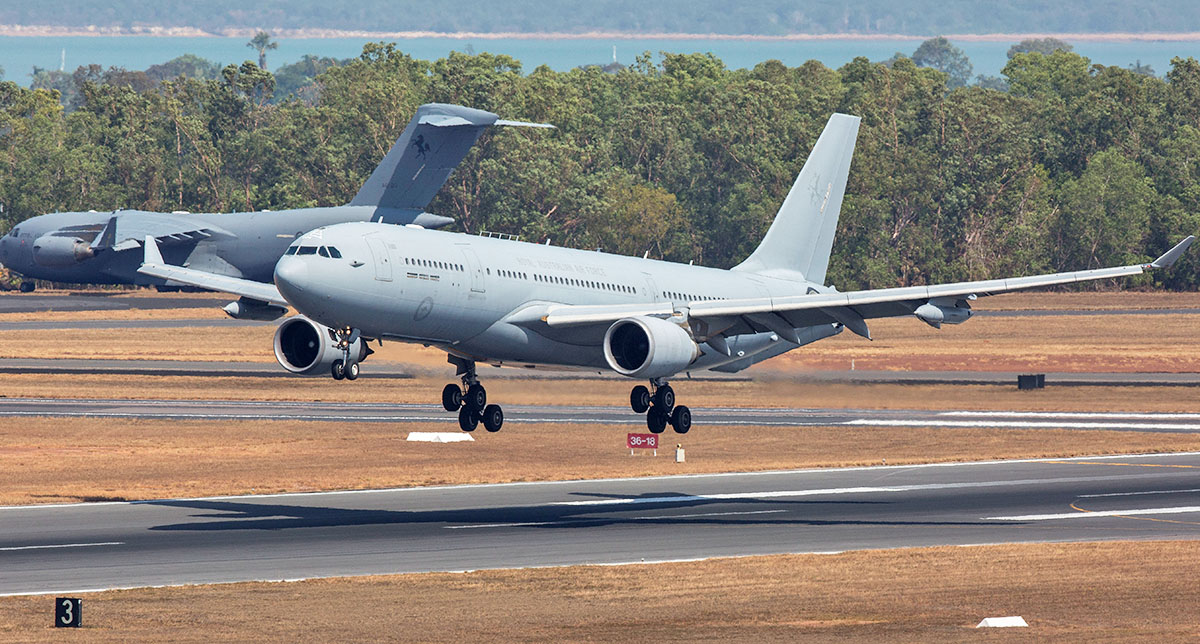
© Commonwealth of Australia, Department of Defence
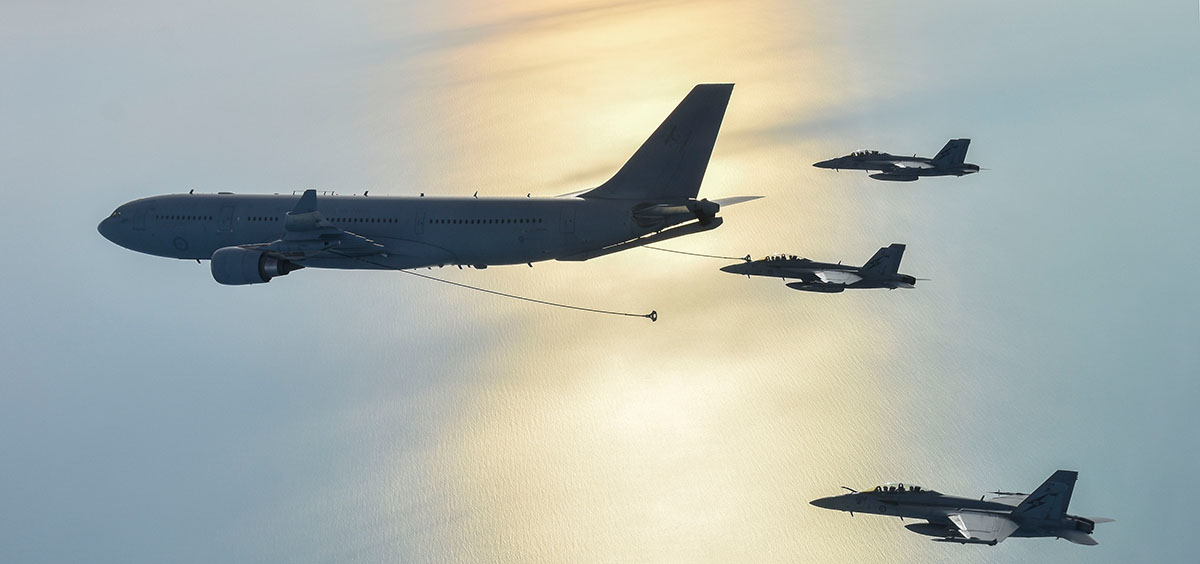
© Commonwealth of Australia, Department of Defence
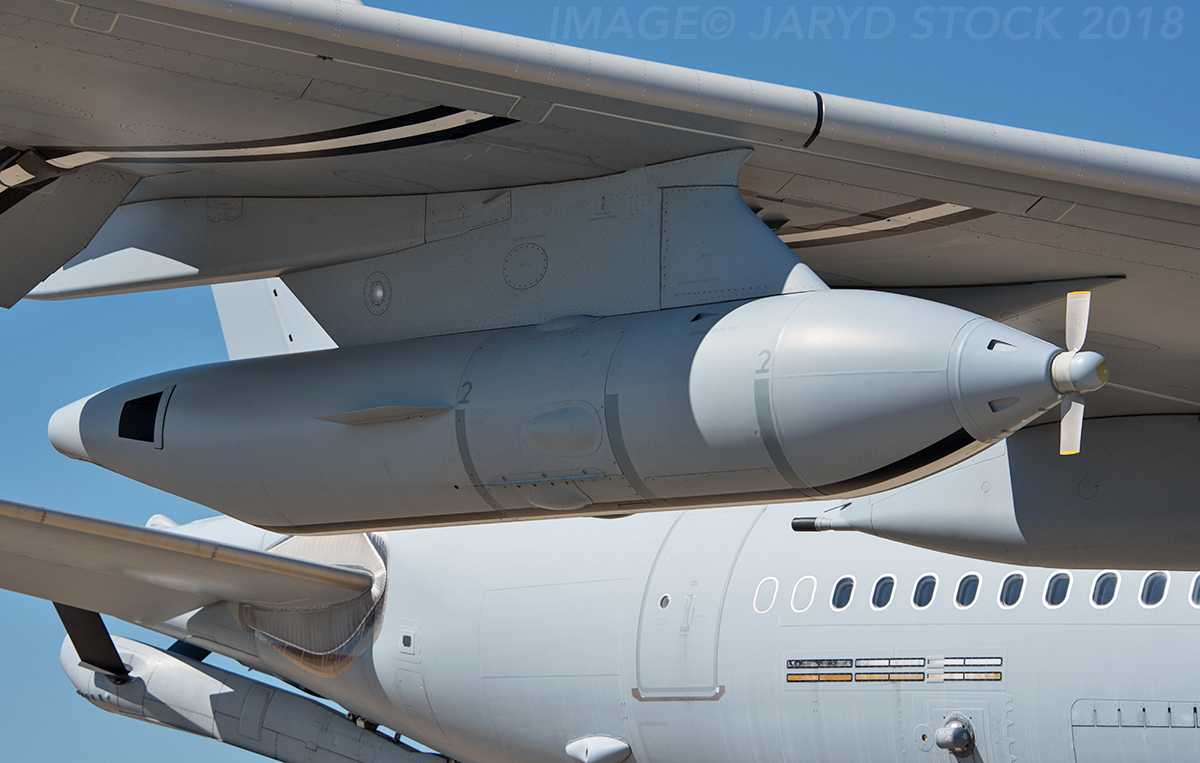
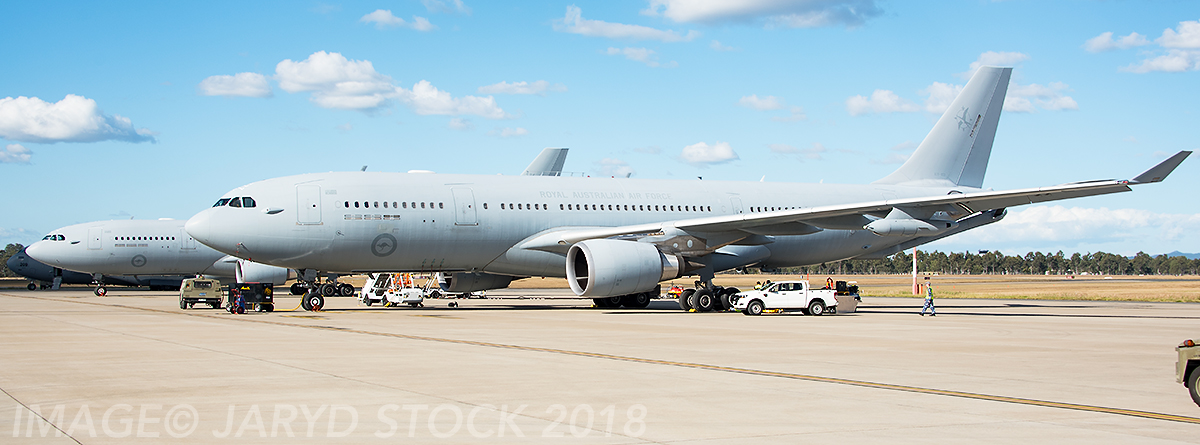
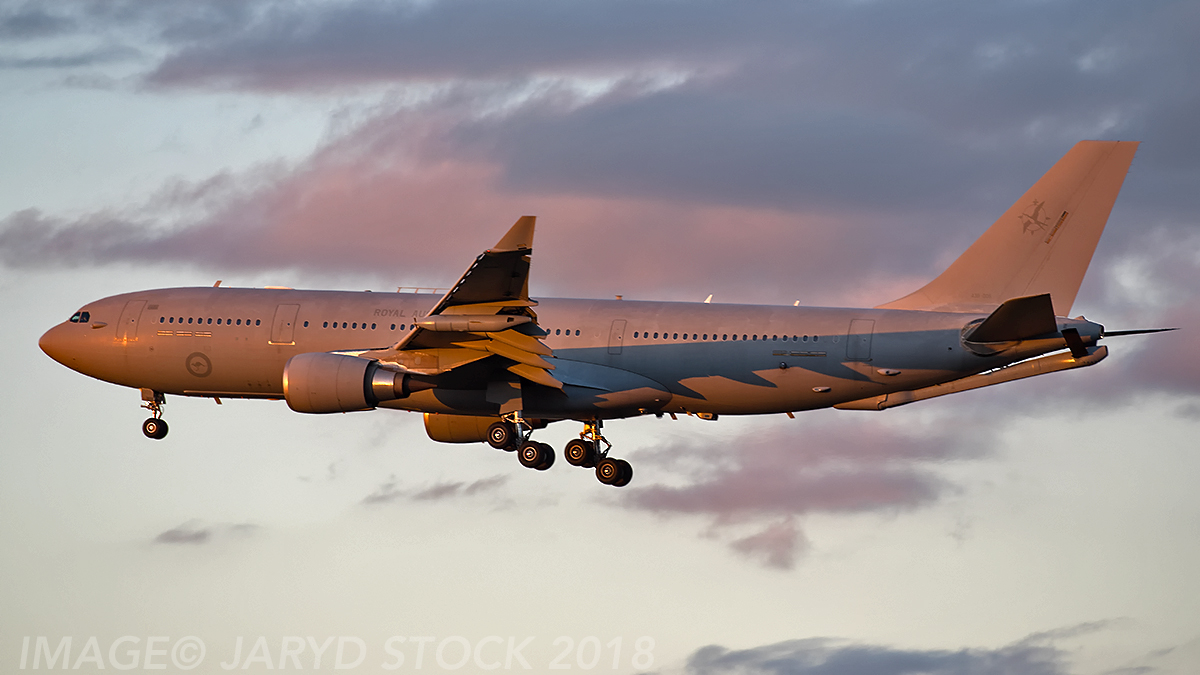
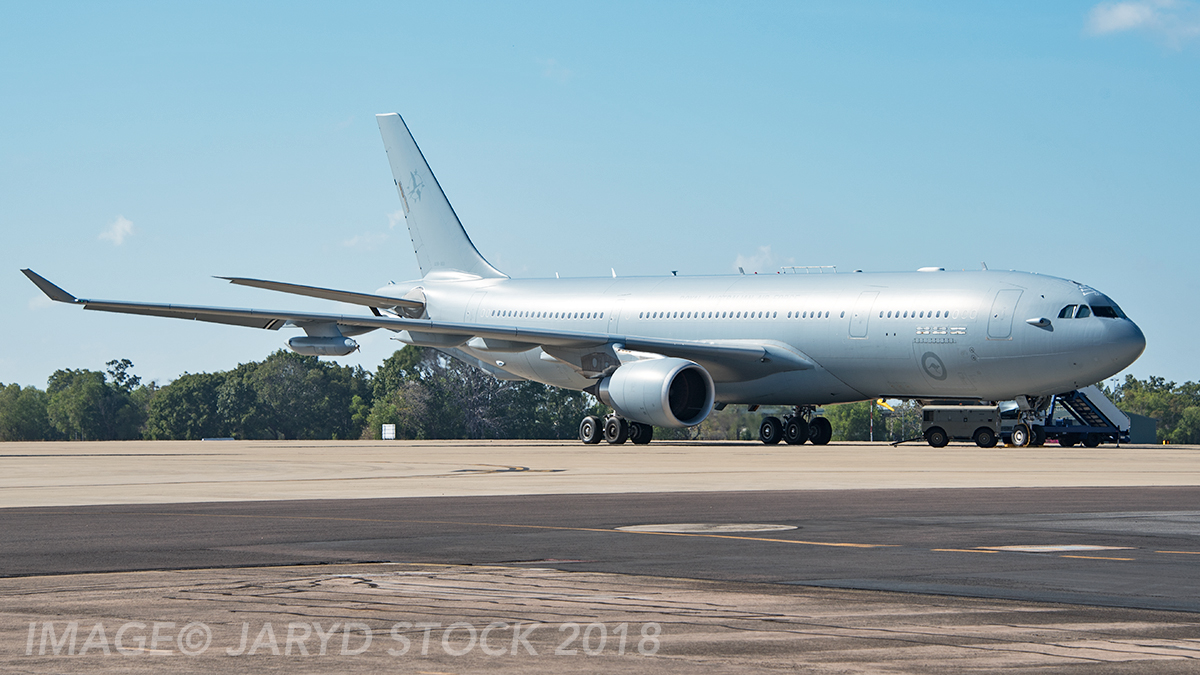
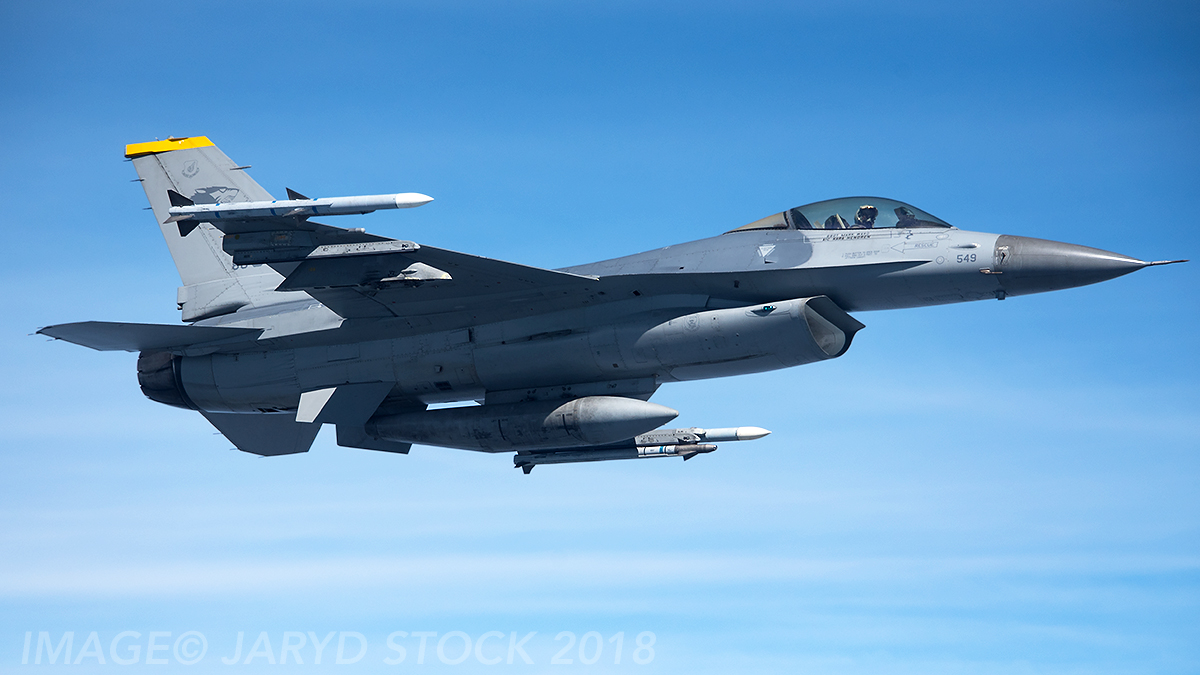

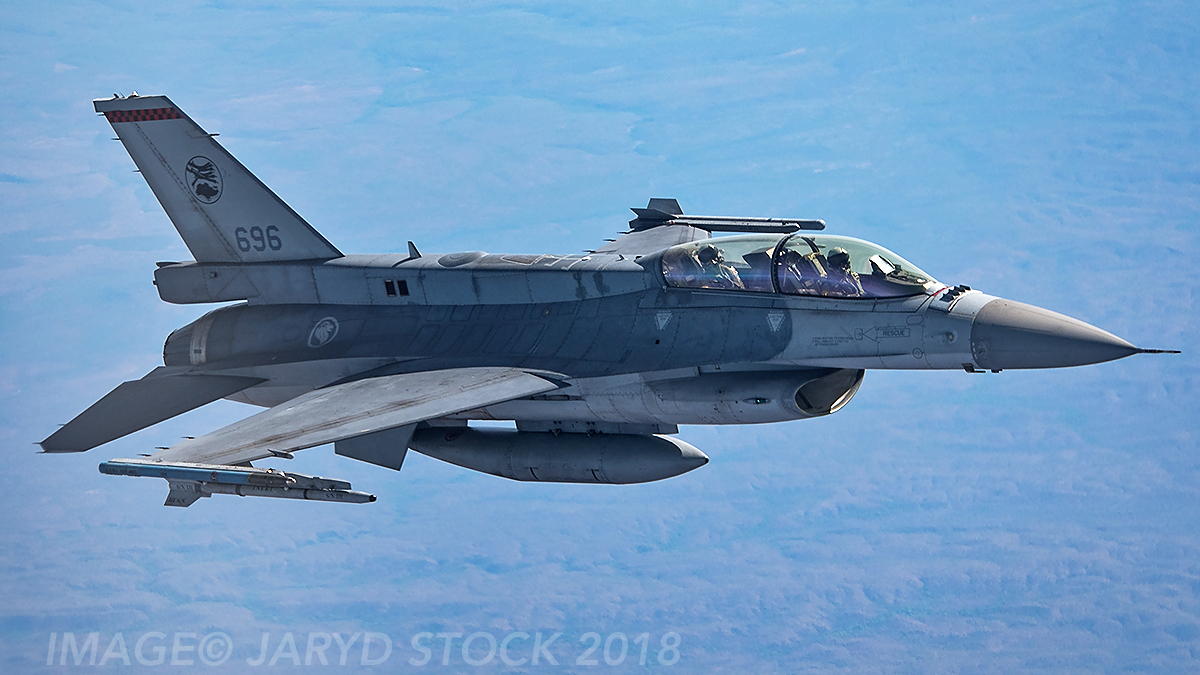
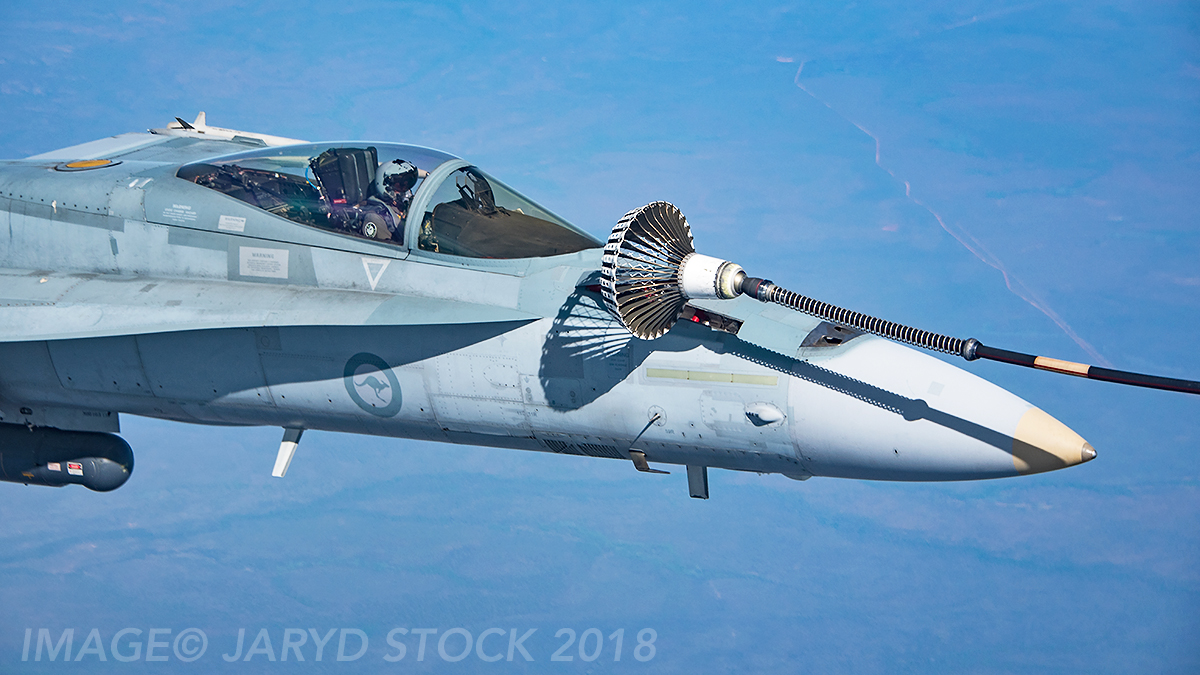
Jaryd Stock is based in Sydney Australia. He has been a die-hard aviation enthusiast from a young age when he was chauffeured around by his father to various airshows and airports around Australia. At his first Airshow he witnessed the awesomeness of a General Dynamics F-111C and immediately fell in love with aviation.
Jaryd picked up a camera at a young age and has never looked back. He now combines photography and writing to highlight “Downunder” aviation; especially U.S. DoD units. Jaryd uses Nikon cameras and lenses.


